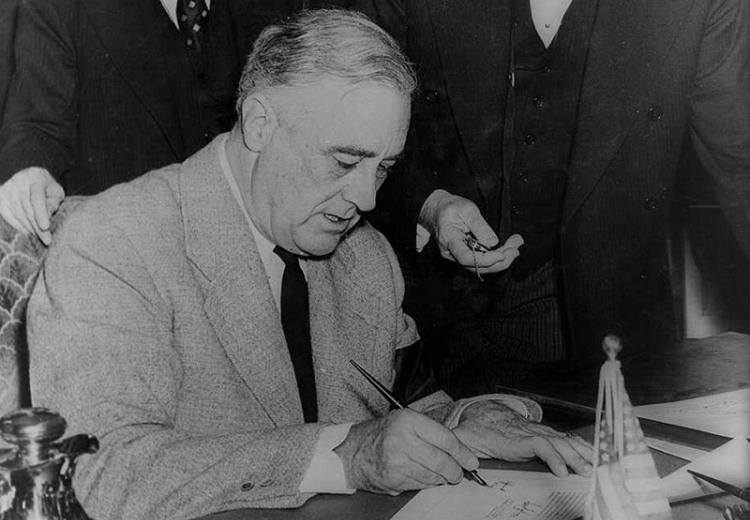Lesson 1: How "Grand" and "Allied" was the Grand Alliance?

President Roosevelt signing the declaration of war against Germany, Dec. 11, 1941
The most terrible war in modern history, World War II was fought by the United States to achieve objectives that would not only protect the American nation from aggression but also would permanently better the lot of humankind. Fifty years after its end, the world still lives with the unfolding of its consequences—the rise and decline of the Soviet Union, the end of German aspirations to European dominance, the demise of Western colonialism, a 45-year East-West Cold War and its aftermath, the rebirth of Imperial Japan as a bastion of liberal capitalism, the rise of China as East Asia's dominant power. Whether in the continued tension between Japan and China or in the turbulence of the Middle East, the war's legacies loom large in all our lives.
This lesson plan will survey the nature of what Winston Churchill called the Grand Alliance between the United States, Great Britain, and the Soviet Union in opposition to the aggression of Nazi Germany and Imperial Japan. Documents from the Yale Avalon Project and other online resources will serve as primary sources for this lesson.
Guiding Questions
To what extent was the alliance against the Axis powers unified in values and postwar goals?
Learning Objectives
Lay out the outlooks and objectives of the United States, Great Britain and the USSR, at the beginning of World War II with some sense of areas of convergence and disagreement.
Evaluate the Atlantic Charter and the Four Freedoms as alliance goals and weigh them against the experience of the Nazi-Soviet agreements of 1939.
